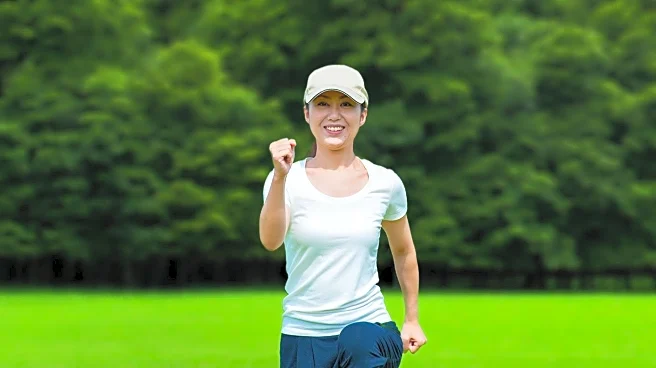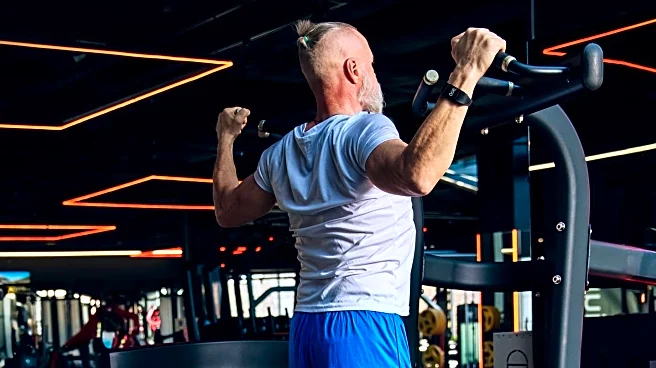What's Happening?
Fitness experts have identified key exercises that older adults should incorporate into their routines to maintain strength, balance, and energy as they age. These exercises include moderate cardio activities like walking, hiking, and water exercises, which are particularly beneficial for individuals with arthritis. Light strength exercises such as squatting, hinging, pushing, pulling, and carrying are recommended to enhance functional movements and reduce the risk of injury. Balance exercises, including standing on one foot and yoga, are also emphasized to prevent falls. The Centers for Disease Control and Prevention (CDC) suggests that adults aged 65 and older engage in at least 150 minutes of moderate aerobic activity or 75 minutes of vigorous activity weekly, along with two days of strengthening exercises.
Why It's Important?
The significance of these exercises lies in their ability to help older adults maintain independence and improve their quality of life. Regular physical activity is crucial in reducing the risk of diseases such as Type 2 diabetes, heart disease, cancer, and dementia, which are more prevalent with aging. By focusing on minimal-impact activities and functional movements, older adults can enhance their mobility and stability, thereby reducing the likelihood of falls and injuries. Programs like SilverSneakers, often covered by insurance, provide opportunities for older adults to engage in tailored exercise routines while fostering social connections, which can further encourage consistent participation.
What's Next?
As older adults continue to incorporate these exercises into their routines, they may experience improved physical health and reduced disease risk. Healthcare providers and fitness professionals are likely to continue advocating for personalized exercise plans that cater to individual needs and limitations. The emphasis on safe and effective exercise for older adults may lead to increased participation in community fitness programs and greater awareness of the benefits of physical activity in aging populations.
Beyond the Headlines
The broader implications of promoting exercise among older adults include potential shifts in healthcare policy to support preventive measures that reduce healthcare costs associated with age-related diseases. Additionally, there may be cultural changes in how society views aging, with a focus on active and healthy lifestyles rather than limitations. This could lead to increased investment in fitness facilities and programs designed specifically for older adults, fostering a more inclusive approach to health and wellness.









